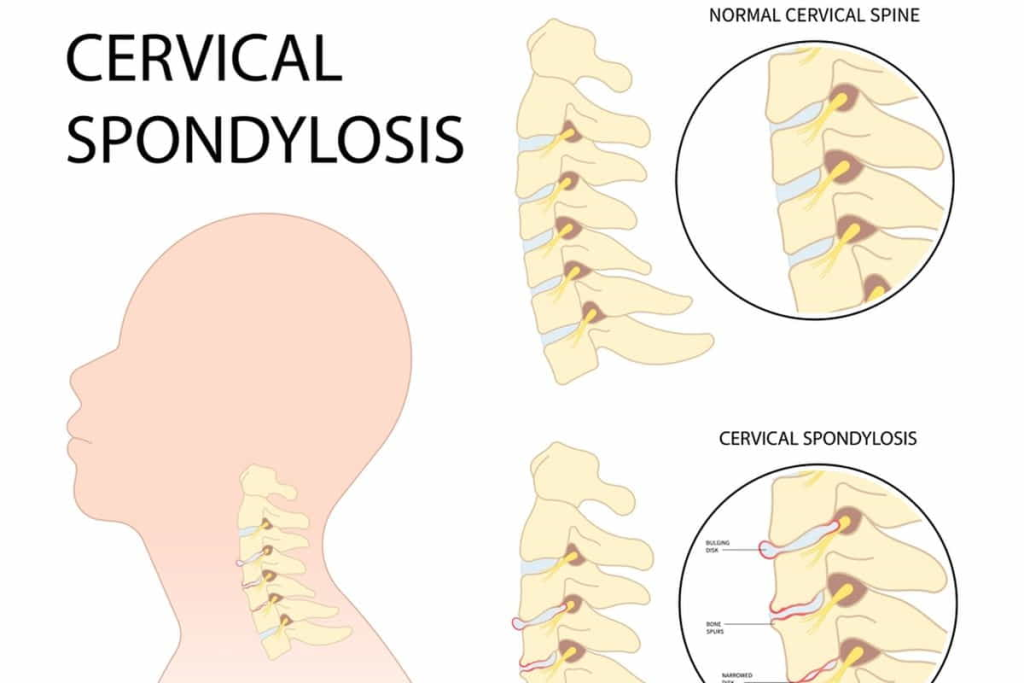Introduction
Cervical spondylosis refers to age-related wear and tear affecting the spinal disks in the neck. This condition commonly develops as people age and can lead to chronic neck pain, stiffness, and sometimes neurological symptoms. Understanding proper prevention and evidence-based treatment approaches is essential for managing this condition effectively.

Prevention Methods
Maintaining good posture is crucial for preventing cervical spondylosis. When sitting, keep your feet flat on the floor with knees at hip level, and ensure your computer monitor is at eye level. Take regular breaks every 30-45 minutes to stretch and change positions if you work at a desk.
Regular exercise helps strengthen neck muscles and improve flexibility. Focus on low-impact activities like swimming, walking, or yoga. Specific neck-strengthening exercises, when performed correctly, can provide additional support to the cervical spine.
Ergonomic adjustments in your workspace and daily activities can significantly reduce strain on your neck. Use supportive chairs with proper lumbar and neck support, and avoid prolonged periods looking down at mobile devices.
Treatment Approaches
Initial treatment typically involves conservative methods. Physical therapy programs designed by qualified professionals can help improve neck strength and flexibility. Therapists may recommend specific exercises, posture training, and pain management techniques.
Medication may include over-the-counter pain relievers or prescription anti-inflammatory drugs for pain management. In some cases, muscle relaxants or other medications might be prescribed for short-term use.
For persistent symptoms, healthcare providers might recommend interventional approaches such as corticosteroid injections or nerve block procedures. These should only be administered by qualified medical professionals.
Surgical intervention is considered only when conservative treatments fail and significant neurological symptoms are present. Surgical options vary based on individual circumstances and require thorough evaluation by spine specialists.
When to Seek Medical Attention
Consult a healthcare provider if you experience persistent neck pain that continues despite self-care measures, pain that radiates to your arms or shoulders, numbness or tingling in your extremities, or weakness in your arms or hands.
Important Considerations
Individual responses to treatments vary significantly. What works for one person may not work for another. Always follow professional medical advice and avoid self-diagnosis. Most cases of cervical spondylosis can be managed effectively with proper care and lifestyle modifications.
Regular follow-up with healthcare providers ensures appropriate monitoring of your condition and adjustment of treatment plans as needed.
References:
- National Institute of Neurological Disorders and Stroke – Cervical Spondylosis
https://www.ninds.nih.gov/health-information/disorders/cervical-spondylosis - American Academy of Orthopaedic Surgeons – Cervical Spondylosis
https://orthoinfo.aaos.org/en/diseases–conditions/cervical-spondylosis-arthritis-of-the-neck/ - Mayo Clinic – Cervical Spondylosis
https://www.mayoclinic.org/diseases-conditions/cervical-spondylosis - Journal of Orthopaedic Surgery and Research – Recent advances in cervical spondylosis
https://josr-online.biomedcentral.com/articles/10.1186/s13018-021-02248-1
This information is provided for educational purposes only and does not constitute medical advice. Always consult with qualified healthcare professionals for proper diagnosis and treatment recommendations.
